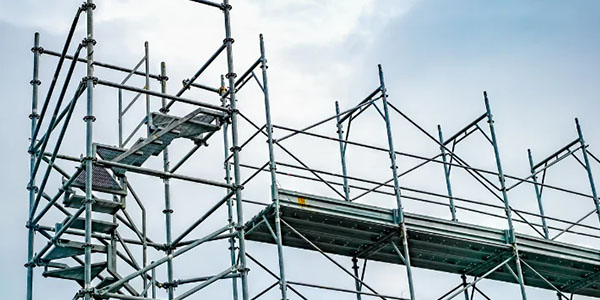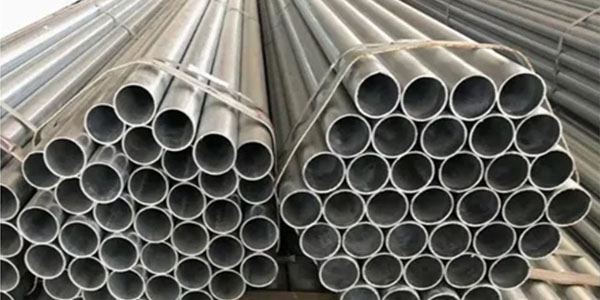A Comprehensive Guide to Scaffolding Pipe Weight
Feb 20, 2025Scaffolding is the backbone of almost every construction project, providing a safe and stable platform for workers. But beyond its structural purpose, understanding the weight of scaffolding pipes is a critical factor for everything from project budgeting to logistics and safety.
This comprehensive guide will demystify the topic of scaffolding pipe weight. We’ll cover why it matters, how to calculate it, and provide a detailed breakdown of different pipe types. Whether you're a project manager, a logistics coordinator, or a purchasing agent, this information is essential for your work.
The overall safety, usability, and performance of scaffolding systems are dependent on the methods of weighting the scaffold tubes. The weight of a scaffolding tube is determined by its material, size, thickness, and length, such that a trade-off between strength and stability is in order while selecting an option for the fabrication of steel scaffolding tubes to meet all requirements.
Typical Weights of Common Scaffolding Tubes
|
Material |
Diameter (mm) |
Wall Thickness (mm) |
Weight per Meter (kg) |
Weight of a 20-foot |
|
Steel |
48.3 |
3.2 |
4.1 |
24.6 |
|
Galvanized Steel |
48.3 |
3.2 |
4.2 (slightly heavier) |
25.2 |
|
Aluminum |
48.3 |
4.0 |
1.8 |
10.8 |
These standard weights are approximate and may vary slightly due to manufacturing tolerances and coatings such as galvanizing.
1. Scaffolding Tubes Made from Steel: These are generally around 39 to 41 pounds per 20-foot tube.
The features and uses consist of high tensile strength, thus they are being utilized mostly for heavy-duty applications.
2. Galvanized Steel Tubes: A little heavier compared to normal steel because of the galvanized covering.
The advantages are better resistance to rust and better endurance.
3. Aluminum Tubes: General weight is about 18 to 20 pounds per 20-foot tube.
The advantages include lightness and resistance, and they are ideal for projects that require easy movement.

Scaffolding tube weights play a critical role in determining the appropriate system for safety, performance, and cost-effectiveness.
Scaffolding pipes are typically made from galvanized steel, adhering to international standards for quality and safety. The most common standard is EN39 (European Standard).
A standard 48.3mm (1.9 inch) OD (Outside Diameter) galvanized steel pipe is the industry norm. Its weight per linear meter is a fundamental benchmark.
Standard Dimensions:
Outside Diameter (OD): 48.3mm
Wall Thickness: 3.2mm or 4.0mm
Length: Commonly 6.0 meters (or customizable)
Standard Weight:
3.2mm Wall Thickness: Approximately 3.56 kg per meter.
4.0mm Wall Thickness: Approximately 4.37 kg per meter.
These figures are crucial for quick calculations and estimations. A 6-meter pipe with a 3.2mm wall thickness would therefore weigh roughly 21.36 kg (6m * 3.56 kg/m).
While knowing standard weights is useful, a more precise calculation is needed for non-standard sizes or for detailed project planning. The weight of any pipe can be calculated using a simple formula:
Weight (kg) = Density × Volume
Where:
Density: The density of steel is approximately 7850 kg/m³.
Volume: The volume of the pipe is the volume of the outer cylinder minus the volume of the inner cylinder.
The formula can be simplified for ease of use:
Weight (kg/m) = 0.02466 × [Wall Thickness (mm) × (Outside Diameter (mm) - Wall Thickness (mm))]
Let's test this formula with the standard 48.3mm OD pipe with a 3.2mm wall thickness:
Weight = 0.02466 × [3.2 × (48.3 - 3.2)]
Weight = 0.02466 × [3.2 × 45.1]
Weight = 0.02466 × 144.32
Weight ≈ 3.56 kg/m
This formula is a powerful tool for calculating the weight of any steel pipe, regardless of its dimensions.

Among the premier scaffolding makers, AJ Building provides:
Understanding pipe weight allows you to make informed decisions that directly affect your project's profitability.
Selecting the Right Material: For a high-rise building with heavy loads, steel is the clear choice. For a quick, low-load project like a concert stage, the lightweight nature of aluminum could save significantly on labor and transport costs.
Optimizing Logistics: Knowing the exact total weight of your scaffolding allows you to book the correct number and type of trucks, ensuring you don't overpay for transport or face delays due to logistical errors.
Invoicing and Inventory: For scaffolding rental companies, accurate weight data is crucial for inventory management and customer invoicing. It ensures that materials are accounted for and billed correctly.
Knowledge of scaffolding tube weight is essential to safety and project pragmatism. Depending on whether you want lightweight and moveable or heavy and massively stable tubes, any information is useful as long as it is to your advantage.
AJ Building will tailor-made scaffolding tubing to fit your project specifications in every detail. Contact us immediately if you have any such needs.
What is the standard weight of a scaffolding tube?
The weight of a scaffolding tube depends on its material, length, and wall thickness. For galvanized steel tubes:
48.3mm (1.9-inch) OD, 3.2mm thickness: ~3.56 kg per meter
48.3mm OD, 4.0mm thickness: ~4.42 kg per meter
Other sizes: Custom specifications may have different weights.
How do I calculate the total weight of scaffolding tubes for my project?
To calculate the total weight:
Weight per meter (kg) × Tube length (m) × Number of tubes = Total weight (kg)
For example, if using 3.2mm thick tubes with 6 meters in length and 50 pieces, the total weight would be:
3.56 kg/m × 6 m × 50 = 1,068 kg
How to calculate scaffolding quantity-Quora
Weight of scaffolding BRAND NEW --Scaffolders Forum